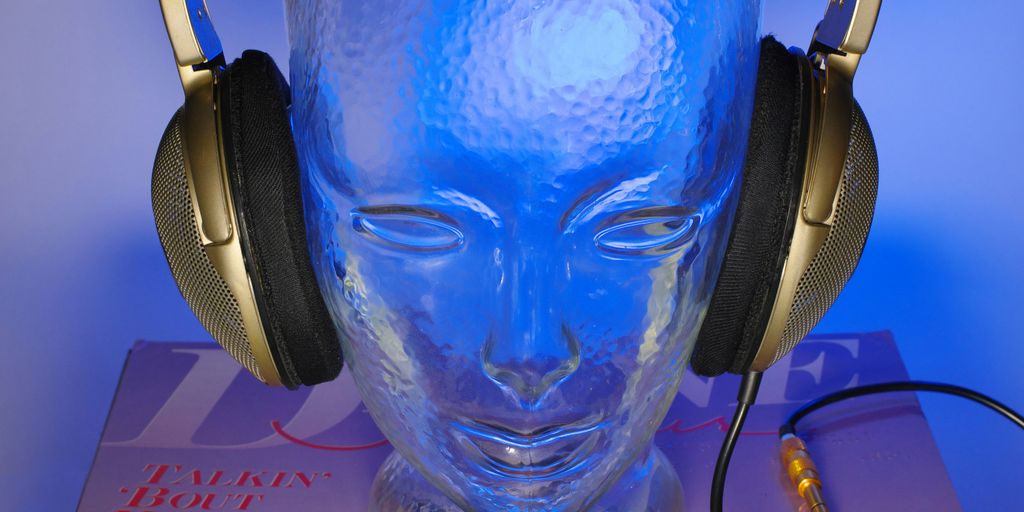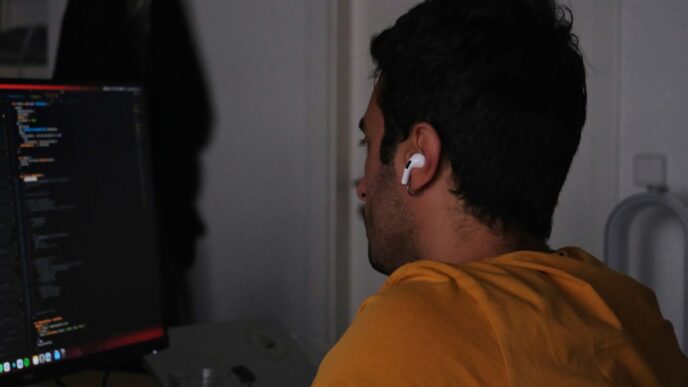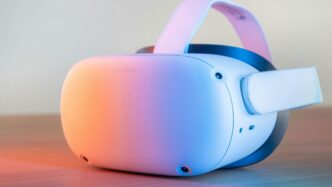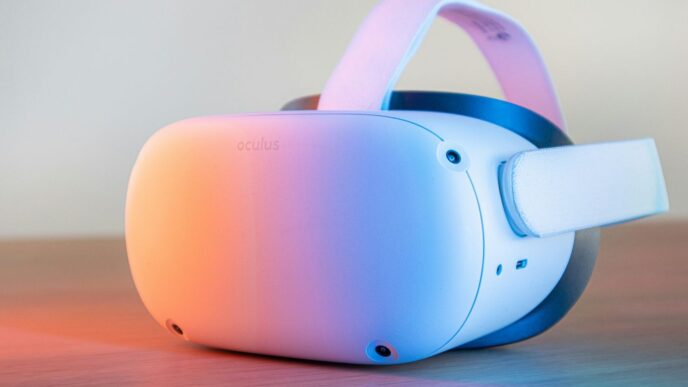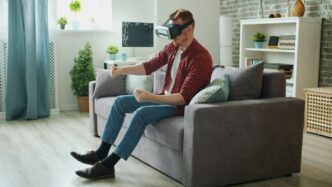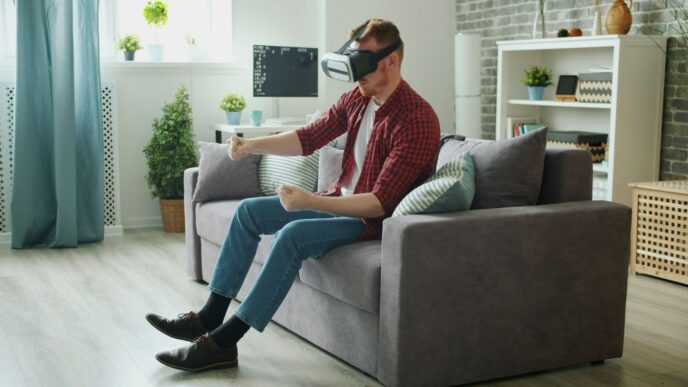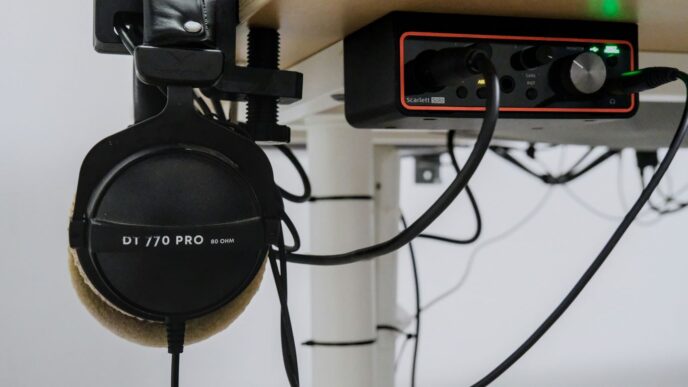Virtual reality, or VR, has been around for a while, but it feels like things are really starting to change, especially as we look at 2025 and beyond. It’s not just for games anymore. We’re seeing new headsets come out that are lighter and can do more, mixing real and virtual worlds. Plus, the software is getting better, with more types of experiences available. It’s an exciting time to see where this technology is headed and how it might change how we work, play, and connect.
Key Takeaways
- Standalone VR headsets are becoming more common and capable, often including mixed reality features.
- The content available for VR is growing beyond just gaming, with more social and practical applications emerging.
- New technologies like AI and faster internet (5G) are making VR experiences more realistic and accessible.
- Businesses are finding more uses for VR in areas like training and design, which is helping the market grow.
- While there have been some ups and downs, VR is steadily becoming a more integrated part of how we interact with technology and each other.
The Evolving Landscape of Next Generation of VR Hardware
It feels like just yesterday we were talking about VR headsets being these bulky, tethered things that only gamers really bothered with. But wow, things have really changed, haven’t they? As of mid-2025, the whole VR hardware scene is looking way more polished and, honestly, more practical. We’re seeing a definite shift away from pure virtual reality towards what everyone’s calling mixed reality, or MR. It’s like the industry finally realized that blending the digital world with our actual surroundings is where the real magic happens.
Standalone Headsets Lead the Charge
One of the biggest moves is how much standalone headsets have taken over. You know, the ones that don’t need a super-powerful PC or a tangle of wires to work? Meta’s Quest 3 really set the tone for this, offering a much slimmer design and, importantly, full-color passthrough cameras. This means you can actually see your room while you’re wearing the headset, which is a game-changer for mixed reality. It’s becoming pretty standard now; if a new headset doesn’t have decent MR capabilities, it feels a bit behind the curve. It’s not just Meta, either. We’re seeing other companies working on similar devices, trying to make VR and AR work together more smoothly. This move towards self-contained, powerful headsets is making VR way more accessible than it used to be.
Mixed Reality Becomes the Standard
Speaking of mixed reality, it’s really becoming the expected feature for any new VR gear. Think about it: being able to see your real environment while still getting that immersive digital overlay is incredibly useful. It’s not just for games anymore. Imagine collaborating on a 3D model with colleagues who appear as life-sized avatars in your actual office, or having virtual instructions pop up right in front of you as you work on something. This blend of real and virtual is what a lot of the new hardware is built around. It’s a big step up from just being completely cut off from the real world.
Innovations in Form Factor and Fidelity
Beyond the MR aspect, hardware designers are really focusing on making these headsets lighter and more comfortable. Nobody wants to wear a brick on their face for hours, right? We’re seeing new lens technologies, like pancake lenses, that help slim down the overall profile. There are also some really interesting, albeit niche, devices popping up from smaller companies. Some are pushing the boundaries with super high-resolution displays, while others are aiming for ultra-lightweight designs that feel more like regular glasses. While these high-end, specialized headsets can be pretty pricey, they’re showing us where the technology is headed. It’s all about getting that incredible visual quality without the bulk, making the whole experience feel more natural and less like wearing a clunky piece of tech. It’s exciting to see how companies are pushing the limits of what VR can be.
Software and Content: Fueling the Next Generation of VR
If the hardware is getting really good, then the software and content are what really make VR take off, right? In 2025, the stuff you can actually do in VR has gotten way more varied. It’s not just about games anymore, though gaming is still a huge part of it. We’re seeing big game studios put out massive titles that used to only be possible on powerful PCs, but now they run great on standalone headsets. Think huge action games or even racing sims that feel incredibly real. It’s pretty wild how far standalone VR has come.
But it’s not just about single-player experiences. Social VR platforms are really changing how we hang out online. People are meeting up in virtual spaces for concerts, parties, or just to explore worlds that other users have built. It’s like a whole new way to connect with friends, or even make new ones, without leaving your house. These platforms are becoming digital town squares.
Beyond that, VR is showing up in more practical places too. We’re seeing more apps for fitness, education, and even work. Imagine learning a new skill with a virtual tutor that adapts to how you learn, or attending a work meeting where everyone feels like they’re in the same room. The potential for VR training is massive, with companies already seeing real benefits from using it for employee development. It’s exciting to see how these different types of content are making VR more than just a novelty.
Beyond Gaming: Diverse Content Libraries Emerge
Social VR Platforms Redefine Interaction
AAA Titles Showcase Standalone Power
Key Technological Advancements Driving VR Forward

It feels like just yesterday we were talking about VR being a niche thing, mostly for games. But wow, things are really moving fast. A lot of the big leaps we’re seeing now are thanks to some pretty serious tech upgrades happening behind the scenes. It’s not just about better graphics anymore; it’s about making the whole experience smarter, faster, and more connected.
Artificial Intelligence Enhances Immersion
AI is doing some seriously cool stuff for VR. Think about how games and virtual worlds look and feel. AI is helping make those 3D characters and environments way more realistic. It’s also making game scenarios and how you interact with them much more dynamic. Beyond just games, AI is powering simulations that are actually useful. Medical students can practice tricky procedures without any real-world risk, and students in general can have more engaging learning experiences. It’s like having a super-smart assistant that makes everything feel more real and responsive.
5G Connectivity Unlocks New Possibilities
This is a big one. 5G is a game-changer for VR because it can handle so much more data, way faster, and with less delay. This means we can do things like split the processing load between your headset and the cloud, which can make things run smoother and look better. Imagine getting real-time customer support in VR, or having product demos that feel like you’re actually there. It’s also opening doors for better remote collaboration on projects, like architects working together on a building design in a shared virtual space. This kind of speed and responsiveness is what’s needed to really push VR beyond just entertainment and into more practical uses. You can find out more about how these advancements are shaping the future of VR here.
WebAR and Cross-Platform Accessibility
Another huge step forward is how we can access AR experiences now. WebAR means you don’t always need a special app to get into augmented reality. You can often just use your web browser. This makes AR and VR much more available to everyone, no matter what kind of phone or computer they have. It’s all about making these technologies work smoothly across different devices and systems. This push for cross-platform compatibility is really important for making sure VR and AR can reach their full potential and become a regular part of our lives.
Industry Adoption and Market Predictions
It feels like just yesterday we were talking about VR as a niche gaming thing, but wow, things are really changing. Businesses are starting to see the real value here, not just for fun, but for actual work. We’re seeing a big shift from just playing games to using this tech for practical stuff. The market is definitely growing, with projections showing it could reach tens of billions of dollars soon.
Enterprise Use Cases Expand Significantly
Companies are figuring out that VR isn’t just a gimmick. Think about training new employees – instead of just reading manuals, they can actually practice in a virtual factory or hospital. It’s safer and way more effective. Plus, architects can walk through buildings before they’re even built, catching problems early. It’s pretty wild how many industries are finding ways to use this.
Education and Training Embrace Immersive Learning
Remember those boring history lessons? Imagine actually walking through ancient Rome instead of just looking at pictures. That’s what VR is bringing to schools and training programs. It makes learning stick because you’re actually doing it. From medical students practicing surgery to mechanics learning to fix engines, the possibilities are huge. It’s a much more engaging way to learn, and honestly, a lot more fun.
Consumer Sentiment Shifts Towards Practical Benefits
For a while, people were a bit confused about what VR was really for, especially with all the talk about the ‘metaverse’. But now, consumers are looking for tangible benefits. They want VR to make entertainment better, like feeling like you’re inside a movie. They also want it to make life easier, like meeting up with friends or colleagues virtually without the hassle of travel. As long as the devices get cheaper and more comfortable, and there are more cool things to do, people will keep adopting it. We’re seeing a move towards VR being a useful tool, not just a toy. The global virtual reality market is projected to reach $38 billion by 2029 [8093].
The Future of Immersive Experiences

AR Avatars Bridge Physical and Digital Worlds
Think about stepping into a virtual meeting and seeing not just a static avatar, but a digital representation of yourself that mirrors your real-time expressions and movements. That’s the promise of advanced AR avatars. By 2025, we’re seeing these digital twins become much more sophisticated, moving beyond simple cartoonish figures to highly realistic, expressive digital personas. This isn’t just for gaming; imagine attending a virtual conference and having your avatar convey your engagement through subtle nods or a concerned look, just like you would in person. This level of non-verbal communication is key to making virtual interactions feel more genuine and less robotic. Companies are investing heavily in motion capture and AI to make these avatars truly feel alive, blurring the lines between our physical and digital selves.
The Rise of Wearable AR/VR Devices
While headsets are still the main way to experience VR, the future is looking a lot more… wearable. We’re talking about lighter, more comfortable devices that you might actually want to wear for longer periods. Think sleek glasses that can overlay digital information onto your view of the real world, or even more compact VR headsets that don’t feel like you’re strapping a brick to your face. The goal is to make these devices less intrusive and more integrated into our daily lives. Imagine a pair of glasses that can show you directions as you walk, translate signs in real-time, or let you see virtual notes left by a colleague in a shared physical space. This move towards more discreet and integrated wearables is a big step towards making AR and VR a constant companion, not just a special-occasion technology.
Foundations Laid for the Next Computing Platform
It’s becoming clear that VR and AR aren’t just about entertainment anymore; they’re laying the groundwork for what could be the next major computing platform. Just like how smartphones changed how we access information and interact with the world, immersive technologies are poised to do the same. We’re seeing a shift from flat screens to 3D spatial computing, where we interact with digital content in a more intuitive, physical way. This means everything from how we work and learn to how we socialize and shop could be transformed. The development of more powerful standalone headsets, coupled with advancements in AI and connectivity, is building the infrastructure for this future. As more businesses adopt these tools for training and collaboration, and as consumer experiences become more compelling, we’re moving towards a future where immersive tech is as common as the internet is today. It’s an exciting time to witness the early stages of this significant technological evolution, and it’s worth keeping an eye on how these trends shape our digital interactions in the coming years AR/VR trends.
Looking Ahead: VR’s Steady March Forward
So, where does all this leave us as we look past 2025? It’s clear that virtual reality isn’t just about games anymore. We’re seeing it pop up in training, social gatherings, and even how businesses operate. While the big, flashy announcements might slow down a bit after the recent hardware releases, the real work of making VR more useful and accessible is happening. Think better software, more practical uses, and devices that are easier to wear and use. The hype around the ‘metaverse’ might have cooled, but the underlying technology is quietly getting better and weaving itself into our lives. It’s not a sudden revolution, but a steady progression, and the next few years will likely focus on refining what we have and building out the experiences that make VR a regular part of our digital world.
Frequently Asked Questions
What’s the difference between VR and Mixed Reality (MR)?
Think of it like this: VR puts you completely inside a digital world, like stepping into a video game. Mixed Reality (MR) is like VR but lets you see the real world around you too, often through special cameras on the headset. This means you can interact with digital things in your actual room, like placing a virtual piece of furniture in your living room to see how it looks.
How is VR hardware changing?
VR headsets are getting much better! They’re becoming more like powerful, self-contained computers you wear on your head, instead of needing to be plugged into a big PC all the time. They’re also getting lighter and more comfortable, and many now have cameras that let you see the real world, making them more useful for different things.
What kind of stuff can you do in VR besides gaming?
VR isn’t just for games anymore. While games are still awesome, people are now using VR for lots of other things. You can hang out with friends in virtual spaces, go to virtual concerts, learn new skills for work, or even try on clothes virtually before you buy them. It’s becoming a tool for many different activities.
How does fast internet (like 5G) help VR?
Super-fast internet, like 5G, helps VR work much better. It means the virtual worlds can look more real and react instantly when you move, making the experience smoother and more believable. It also helps when you want to share VR experiences with others or use VR for work tasks that need quick responses.
What is WebAR and why is it important?
Imagine using VR or AR without needing to download a special app. WebAR lets you access these cool digital experiences right through your web browser, just like visiting a website. This makes it easier for everyone to try out AR and VR, no matter what phone or computer they have.
How are businesses and schools using VR?
Companies are realizing VR can help train employees in safe, realistic simulations, like practicing surgery or learning to operate complex machinery. Schools are using it to make learning more exciting, letting students explore historical sites or the human body up close. It’s all about making learning more hands-on and engaging.


